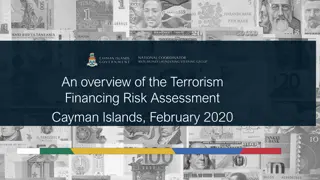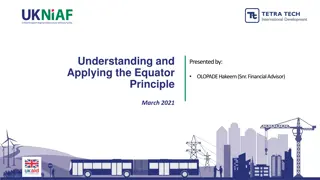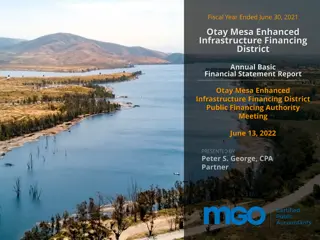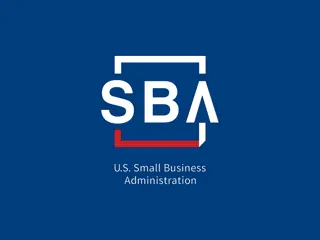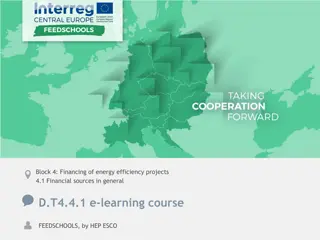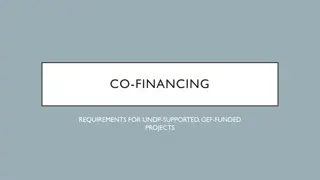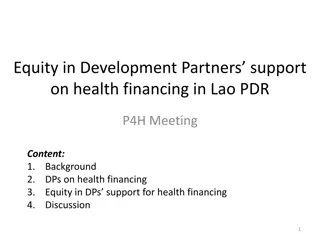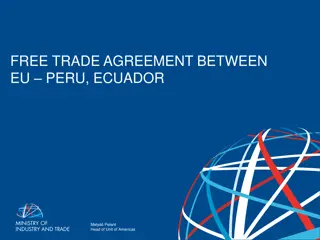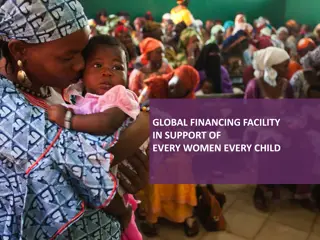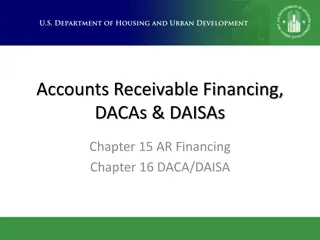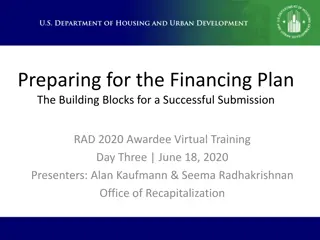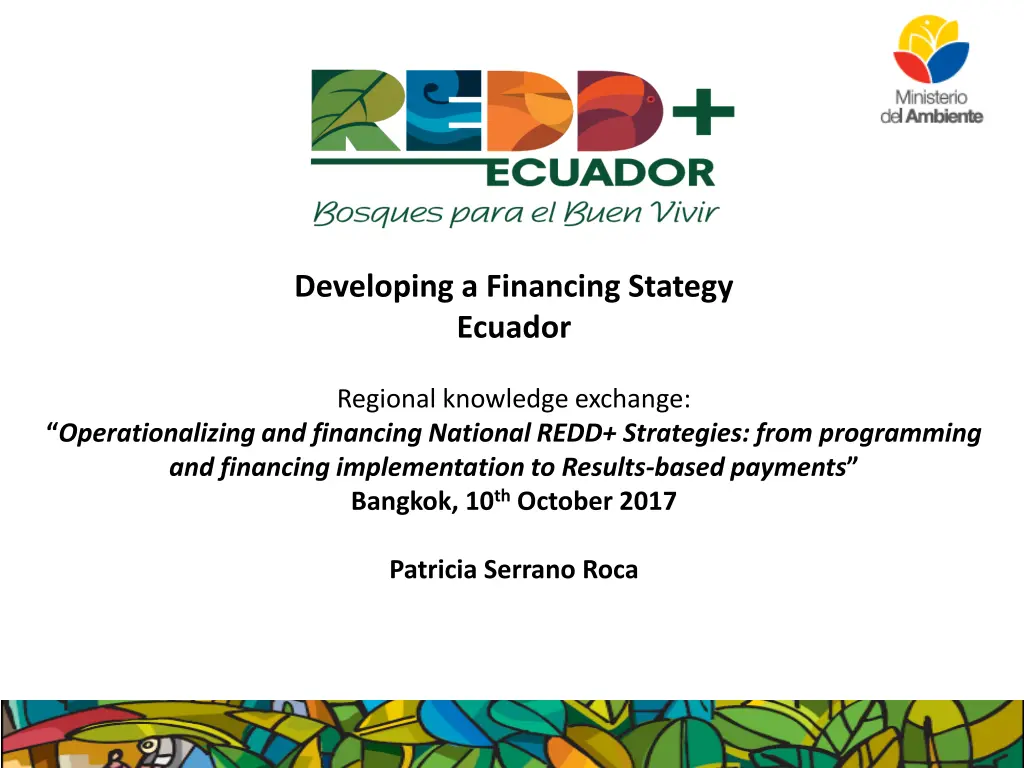
Ecuador REDD+ Financing Strategy
Explore Ecuador's REDD+ Financing Strategy, focusing on financial planning for REDD+ implementation. Learn about estimating financing gaps, identifying income sources, and assessing feasibility for results-based payments. Dive into the investment planning process and financial feasibility considerations for the national REDD+ Action Plan.
Download Presentation

Please find below an Image/Link to download the presentation.
The content on the website is provided AS IS for your information and personal use only. It may not be sold, licensed, or shared on other websites without obtaining consent from the author. If you encounter any issues during the download, it is possible that the publisher has removed the file from their server.
You are allowed to download the files provided on this website for personal or commercial use, subject to the condition that they are used lawfully. All files are the property of their respective owners.
The content on the website is provided AS IS for your information and personal use only. It may not be sold, licensed, or shared on other websites without obtaining consent from the author.
E N D
Presentation Transcript
Developing a Financing Stategy Ecuador Regional knowledge exchange: Operationalizing and financing National REDD+ Strategies: from programming and financing implementation to Results-based payments Bangkok, 10th October 2017 Patricia Serrano Roca
REDD + Financing Strategy The Ecuadorian REDD + Financing Strategy is part of the process for the implementation of the REDD+ Action Plan. The Strategy should, based on the quantification of revenues and expenditures, estimate the financing gap that will be generated for the implementation of the REDD + Action Plan in the country. REDD+ Financial Strategy OBJECTIVE: To provide a financial planning framework in order to obtain the necessary financing for REDD+ implementation Revenues Financial Gap for REDD+ AP implement- ation Expenditures
Investment Planning Process Financial Feasibility 1) PAMs cost estimation 2) Identification of possible incomes 3) Definition of financial gap and possible income sources 4) Identification of financial needs 5) Evaluation of legal and institutional feasibility 6) Short & long term action plan development
Financial Feasibility 1) PAMs Cost Estimation Current Expenditures: recruitment expenses, basic services, consultancies, travel expenses, etc. Investment Expenditures: based on the REDD+ implementation costs study, the main costs of the implementation of REDD + PAMs were established for the prioritized areas. Set of policies and measures to be implemented in prioritized areas Over a period of 30 years at a present value The total amount required for REDD+ implementation is $283.2 million Average expenditure of $1,168 per hectare or $3 per e-tCO2 The average investment cost for the analysis period represents 95.5% of the total estimated expenditure.
Financial Feasibility 2) Identification of possible incomes A potential emission reduction revenues estimate was calculated, quantified by zones and their carbon content. Two scenarios were considered: Conservative scenario with a price of USD 6 Optimistic scenario with a price of USD 10 In average income for the 30-year period will come: 24% from the "Southern Amazon 20% of the "Central Amazon 18% of the "Northern Amazon" and "Esmeraldas Sur and Manab Norte" each 12% of the "Esmeraldas Sur and Manab Norte"; 8% of the "Dry forests and valleys of the south". Esmeraldas Sur y Manab Norte 12% Amazon a Norte 18% Noroccidente y Esmeraldas 18% Amazon a Centro 20% Amazon a Sur 24% Bosques y valles secos del sur 8%
Financial Feasibility 3) Definition of financial gap and possible income sources - Prioritization of PAMs that will be implemented to attend DD and to achieve the goals of the REDD+ AP (current and investment expenditures) - Quantify the possible incomes associated with the RBPs that the country could receive - Based on the estimated incomes and expenditures for the next 30 years , the financing gap for the implementation of the REDD+ AP was estimated.
Sources of Financing - The financing needs of the REDD+ AP require different funding sources, mechanisms and instruments to be identified and mobilized to ensure its implementation. - It could come from public or private sources, the main of them are: fiscal resources (curents assignments, inventives, subsidies), loans national & international (Contingency Credit Credit lines, Debt Swaps, Concessional credits, Commercial credits, Guarantees), grants (Non-reimbursable funds for technical assistance), resuls based payments
REDD+ Subprogammes possible financing sources: investment expenditures, that can be financed by almost all the financial instruments identified as follows:
The success of REDD + depends on: The identification of the funds The establishment of the financial mechanisms, and, The definition of the implementation mechanisms for the prioritized PAMs. Only in this way users and resource managers will be effectively encouraged to reduce deforestation and forest degradation on a scale that generates net emissions reductions over time.
Legal , political & institutional framework What types of funding are available? Funding How to channel the resources? Financial Mechanisms Implementation Mechanisms Through which means the funds reach forest users /beneficiaries for PAMs implementation? REDD+ Policies & Measures



